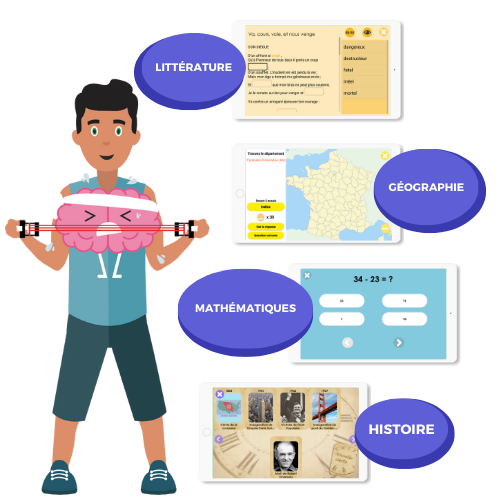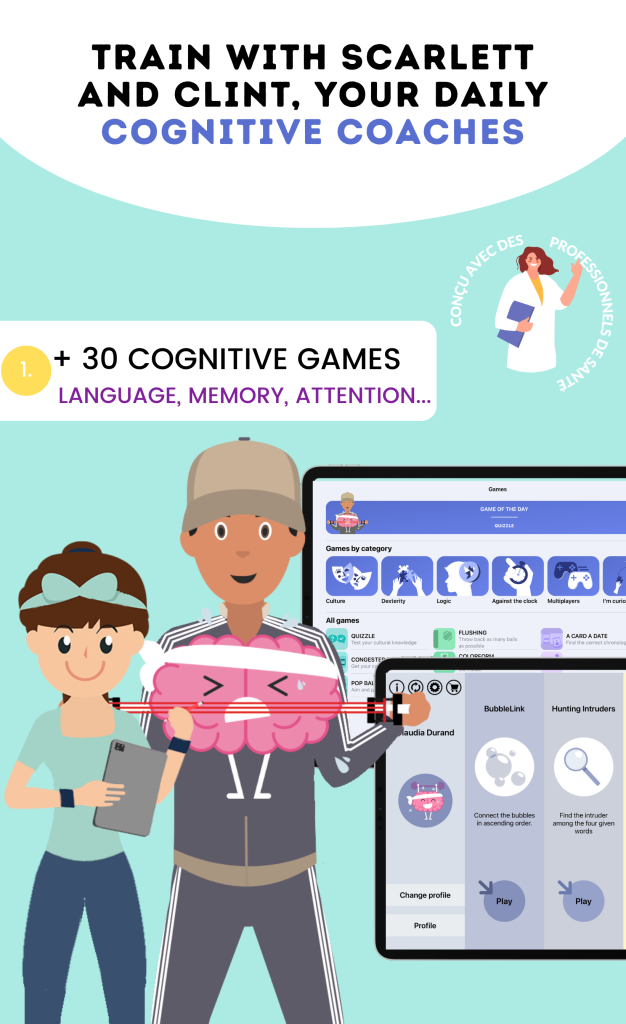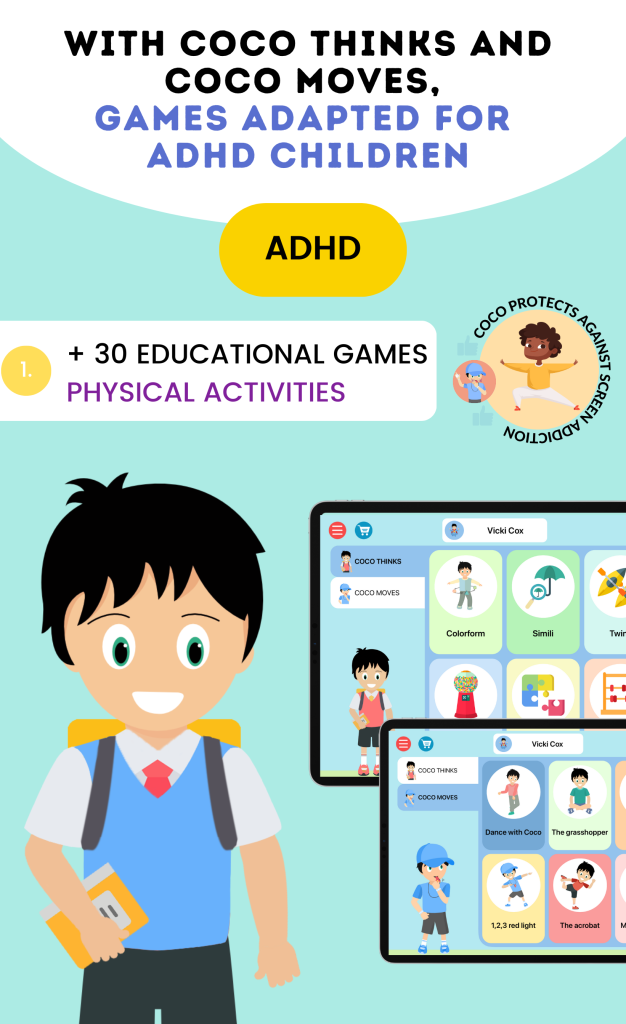Parents or guardians may find it difficult to provide support for schoolchildren in difficulty. The difficulties encountered by schoolchildren can be of different kinds: academic, behavioral, relational, etc. To help a pupil in difficulty, it’s important to take a global approach and consider all aspects of his or her life. When a pupil encounters difficulties, it’s important to support them and help them overcome these obstacles. These difficulties can be of different kinds: academic, behavioral, relational, etc. To help a student in difficulty, it’s essential to have a global approach that takes into account all the dimensions of his or her life.
Identifying students’ difficulties
Potential school reasons
The first step in helping a pupil with difficulties is to identify them. You can do this by observing the student’s behavior at home, talking to the student’s teachers and analyzing the student’s grades. This information will give you an overview of the difficulties the student is experiencing.
Difficulties at school are a common source of stress for schoolchildren. There can be many reasons why a pupil may experience difficulties at school: problems understanding subjects, inadequate organization, attention problems, or too heavy a workload. These difficulties can have a negative impact on a student’s self-confidence and self-esteem, which can exacerbate the situation. To help a middle-schooler with academic difficulties, it’s important to offer educational and emotional support. Setting achievable goals and offering rewards for success can help them regain their self-confidence. Helping students develop effective study habits and time planning can also be helpful. It’s also important to communicate with teachers and school counselors to understand the student’s needs and to obtain additional advice and support. By working together, middle schoolers can overcome their academic difficulties and regain their self-confidence.

Cognitive disorders can affect college students’ ability to understand and learn effectively. Some children may have disorders such as dyslexia, dyscalculia, Attention Deficit Hyperactivity Disorder (ADHD), Autism Spectrum Disorder (ASD) and many others. Teachers can work with health professionals to identify students who may have cognitive impairments and adapt their teaching accordingly. Effective teaching strategies for students with cognitive disorders include using visual aids, encouraging repetition and creating structured learning environments. Teachers can also work with parents to support cognitively impaired students, helping them understand the teaching strategies that work best for their child and providing resources to help students learn and succeed.
Potential personal reasons
Anxiety is a common problem among middle school students. The causes can be multiple: academic pressure, family problems, relationship difficulties, etc. Anxiety can manifest itself in different ways in middle schoolers, such as panic attacks, sleep disorders, eating disorders, phobias and so on. To help a middle-schooler suffering from anxiety, it’s important to create a calm, secure environment, listen to his or her concerns, teach relaxation techniques and stress management skills. It is also essential to collaborate with mental health professionals if necessary for a more adapted and personalized follow-up. By taking the student’s anxiety into account, you can help him or her overcome this difficulty and live life better as a student.
Depression is another difficulty that can affect middle-schoolers. The causes of depression can also be multiple, including genetic factors, stressful life events, relationship problems or mental health issues. Signs of depression can include a sad, persistent mood, loss of interest in daily activities, decreased energy and lower self-esteem. If you suspect a college student is suffering from depression, it’s important to consult a mental health professional for proper diagnosis and treatment. As a supporter, you can help the middle-schooler by providing a stable, supportive environment, offering an attentive ear and encouraging him or her to follow his or her doctor’s recommendations. Working together, you can help a troubled middle-schooler overcome depression and return to a healthier, happier life.
In the CLINT, your brain coach app (which we’ll be talking about in detail later in this article), the emotional side is very important. In fact, after 20 minutes of use, the application stops to ask the student how he’s feeling. They can choose between 6 positive or negative moods. This can be an opportunity for the student to express themselves and share something that’s not going well. On the other hand, it could be the teacher who notices the choice of a negative mood and intervenes to help his or her pupil.
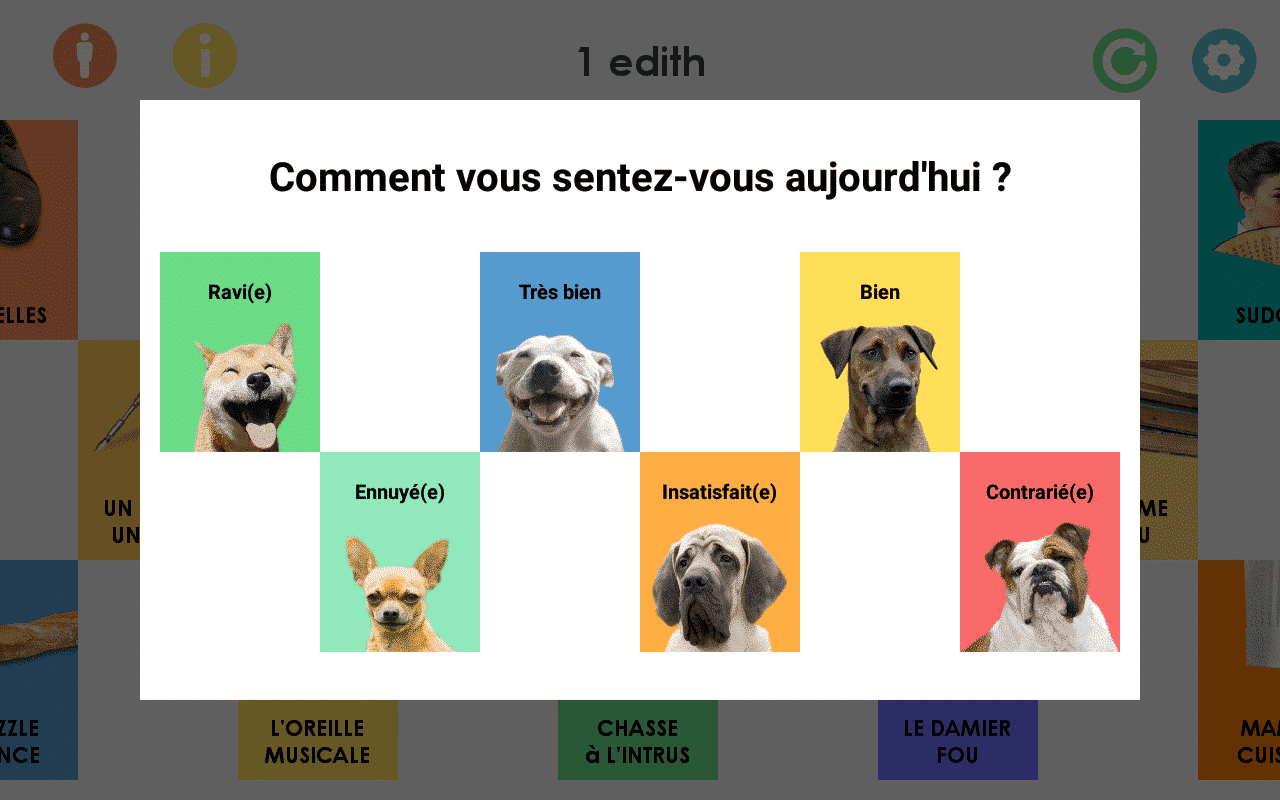
Family difficulties are another source of stress for college students. Family problems can include parental divorce, family disputes, financial problems and health problems in a family member. These situations can have a significant impact on college students’ emotional well-being and social development. To help a middle-schooler experiencing family difficulties, it’s important to provide a stable, reassuring environment. Listening attentively and offering emotional support can help reduce the negative impact of family problems on the student. If the situation is serious, it may be useful to consult a professional for further advice and referrals for specialized help. Ultimately, by working with middle-schoolers and their families, we can offer the support needed to help them overcome family difficulties and continue their development in a positive way.
Middle school students can also be vulnerable to a variety of addictions, including toxic substances, gambling, pornography and excessive use of digital technologies. Teachers can play a crucial role in preventing these addictions by making students aware of the associated risks and offering them positive alternatives to occupy their time and energy.In addition, teachers can help middle-schoolers develop skills for managing social pressure, encouraging them to build self-confidence and engage in healthy activities that help them feel good about themselves. Teachers can also work with parents and health professionals to identify early signs of addiction and offer resources to support students and their families. It’s important to remember that addictions can have a negative impact on middle-schoolers’ social, emotional and academic lives. Teachers must therefore remain vigilant and ready to offer appropriate support and help to students in difficulty. Here you’ll find the website of theAssociation nationale des psychologues de l’éducation nationale, which can provide you with interesting resources, as well as the WHO program on adolescent mental health.

Establish an action plan to support schoolchildren in difficulty
Once you’ve identified the difficulties and their causes, you can draw up an action plan to help the student. This action plan should be achievable and include clear, realistic objectives. It’s also important to establish a timetable for monitoring progress, and to involve the student in drawing up the action plan.
Adapting learning to students’ cognitive needs
To help struggling middle school students, it’s essential to adapt learning to their cognitive needs. Every student learns differently and has unique strengths and weaknesses, so it’s important to adapt teaching to meet their individual needs. To achieve this, it’s advisable to vary teaching and learning methods. For example, use visual approaches for students who need to visualize concepts, or kinesthetic approaches for students who learn best through physical activity. It’s also important to give students the opportunity to work at their own pace. Some students may need more time to understand a concept or subject, while others may pick it up more quickly. Giving them the opportunity to work at their own pace will help students to better assimilate concepts and not feel left behind.
Finally, it’s important to give students opportunities to apply what they’ve learned in real-life situations. Hands-on activities, group projects and field trips can help students better understand abstract concepts and retain them more easily.
By adapting learning to the cognitive needs of middle school students, this can help them to better understand concepts, retain information more easily and do better at school. It can also give them greater self-confidence, which can help them take on new challenges in their academic and personal lives.
Technology and learning disabilities
This webinar is designed for middle school teachers to find out more about learning disorders in middle school and understand how technology can help these students. In the webinar there is a first theoretical part on learning disorders (dyslexia, dysorthography, dyscalculia, dyspraxia…) and a second practical part with tips and strategies to implement.
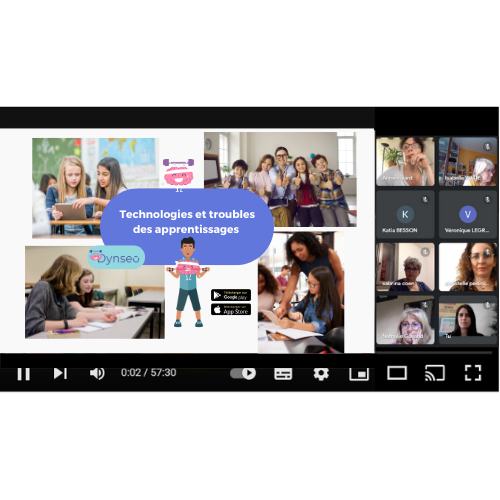
Involving the family and the entire teaching staff
The involvement of the family and all teachers is crucial in helping a pupil in difficulty. Family members play an important role in students’ lives, and their support is often essential in helping students overcome difficulties. Teachers can work closely with parents to identify problems and put in place support strategies to help students. What’s more, it’s important that all teachers involved in the student’s school life are aware of his or her difficulties. This will enable coordinated action to be taken to help the student succeed. Teachers can share information about the student’s progress and difficulties to help develop effective support strategies.
By involving the family and all teachers, students can benefit from comprehensive and consistent support to overcome the difficulties they encounter. This can help build self-confidence, improve academic performance and prevent future problems. Open communication between family and teachers is essential to help students overcome difficulties and succeed.
Establish a progress monitoring schedule with the student
Establishing a schedule for monitoring a student’s progress is a great way to keep track of his or her development and ensure that progress is being made. A tracking schedule can include educational, social and emotional goals, as well as milestones for achieving them. By setting specific goals, it’s easier to measure progress and see where the student may need additional support. The tracking calendar can be a useful tool for encouraging accountability and autonomy in middle-schoolers, as they can be involved in creating and tracking their own goals. It’s important to include the student in the creation of the follow-up calendar, and to ensure that he or she understands the goals and the steps involved in achieving them. With a regular follow-up calendar, students can see the progress they have made, which can boost their self-confidence and encourage them to continue their development in a positive way. However, the objectives must be clear and realistic.

Involve students in developing the action plan
The active involvement of students in the development of the action plan is essential to ensure their commitment and motivation to overcome the difficulties they encounter. Students need to feel involved in the process of planning and implementing support strategies, which will enable them to better understand their own situation and develop a sense of responsibility for their own success. By involving students in the development of the action plan, they will be able to express their preferences and ideas, which can contribute to the personalization of support strategies. Students can be encouraged to come up with ideas for solving the problems they encounter, and to identify the resources and supports that are most useful to them.
By actively involving middle school students in the implementation of the action plan, they are more likely to feel responsible for their own success and work hard to achieve their goals. This can help improve their self-confidence, motivation and self-esteem, all of which are key factors in overcoming difficulties at school and succeeding in later life.
Raising middle school students’ awareness of a healthy lifestyle
Educating middle school students about healthy living is important for their physical and mental health. Teachers can integrate health topics into their lessons, teaching basic concepts such as balanced nutrition, the importance of regular exercise and stress management. They can also organize extracurricular activities that encourage a healthy lifestyle, such as sports clubs or healthy cooking workshops. Teachers can also encourage college students to take care of their mental health, by teaching stress and anxiety management techniques, encouraging them to practice relaxing activities such as yoga or meditation, or inviting them to talk to a school counselor if they need to.

Finally, teachers can help middle school students understand the risks associated with drug and alcohol use, by providing them with accurate, factual information on the health effects of these substances. By educating middle school students about healthy living, teachers can help promote a balanced lifestyle that supports students’ physical and mental health, and enables them to develop healthy habits that will stay with them throughout their lives.
Helping students get organized
To succeed at school, middle schoolers need to be able to organize themselves effectively. You can help them learn effective work methods, encourage them to take notes and revise regularly, and help them organize their free time. Helping a middle-schooler get better organized can be a challenge, but there are effective ways to go about it. First, it’s important to create an organized, distraction-free workspace where middle-schoolers can focus on their tasks. Secondly, teachers can teach planning and organization techniques, such as creating a study calendar or prioritizing tasks according to importance.
Teachers can also encourage middle schoolers to use technological tools such as task management or reminder apps, to help them remember important deadlines and track their progress. Finally, teachers can help middle schoolers develop regular routines for their daily activities, such as getting up at a set time, eating a balanced breakfast and exercising regularly. By encouraging positive habits, middle schoolers can better manage their time and energy, which can improve their academic success and overall well-being. By helping students to organize themselves better, teachers can help to develop their independence and self-confidence, giving them the tools they need to manage their work effectively and achieve their goals.

Teaching effective work methods
Teaching effective work methods is crucial to helping middle school students succeed in school and develop their independence. Teachers can start by teaching note-taking, planning and time organization techniques to help middle-schoolers better manage their work. They can also teach effective reading techniques, such as active reading and marginal note-taking, to help middle-school students better understand the texts they read.
In addition, teachers can help middle school students develop their research skills, teaching them how to find and evaluate reliable sources of information online. Teachers can also teach middle school students effective writing techniques, such as planning the structure of a text and using appropriate quotations to reinforce their arguments.
Finally, teachers can encourage middle school students to practice self-assessment and critical reflection on their own work, by providing clear criteria for evaluation and encouraging them to set personal learning goals. By teaching effective working methods, teachers can help middle school students develop valuable skills that will help them succeed in school and become independent, effective lifelong learners.
Encouraging motivation and self-confidence
Recognizing students’ efforts
There are a number of concrete examples you can use to show schoolchildren that you recognize their efforts. First of all, it’s important to give them positive, constructive feedback when they make progress. It’s essential to let them know that we are aware of their efforts, and that they are appreciated.
Reward ceremonies can also be organized, for example, by awarding prizes to those who have improved their results, or by recognizing their work on class projects. Field trips can also be organized to reward students’ efforts and progress.
Finally, it’s important to give students the opportunity to express themselves and actively participate in their own assessment process. By giving them the opportunity to self-assess and set personal goals, this gives them a degree of responsibility for their own educational journey and a better understanding of their own development.
By rewarding students’ efforts in concrete ways, and giving them the opportunity to express themselves and actively participate in their assessment, middle schoolers will be more motivated and engaged in their learning process. This can encourage them to continue to work hard and become more involved in their own academic and personal success.
Valuing success
Valuing the achievements of middle-school students is an important step in boosting their self-confidence and motivation to continue developing. Successes can be anything from academic achievements to personal accomplishments. It’s important to recognize these successes and celebrate them with your students. This can include verbal praise, material rewards or special activities to celebrate their achievements. It’s also important to highlight the student’s efforts, rather than just the results. This allows the student to focus on the learning and development process, rather than the end results. By recognizing students’ achievements, we show them that we are proud of them and believe in their ability to succeed. This can boost their self-confidence and motivate them to keep working hard to achieve their goals.

Encouraging schoolchildren’s interests
Encouraging students’ interests is an excellent way of keeping them motivated and committed to learning. Middle schoolers’ interests can vary considerably, but it’s important to identify them and use them to encourage learning. Teachers can incorporate middle-schoolers’ interests into their lessons by using concrete examples or relevant case studies. For example, if a middle-schooler is passionate about video games, the teacher can use examples of video games to teach subjects such as mathematics, physics or computer programming.
Teachers can also encourage students to pursue their interests outside of school. They can provide additional resources or reading recommendations to help middle-schoolers deepen their knowledge in their areas of interest. Finally, teachers can also organize extracurricular activities that allow middle schoolers to pursue their interests outside the classroom. These activities can include chess clubs, debate clubs, book clubs, or any other activity that encourages middle-schoolers’ interests. By encouraging middle-schoolers’ interests, teachers can help maintain their motivation and commitment to learning, while helping them develop skills in the areas they are most passionate about.
Capturing the attention of schoolchildren and adapting to their expectations
To capture the attention of middle school students and adapt to their expectations, it’s essential to use digital tools that are popular and familiar to them. Today’s middle school students were born in the digital age, and are often more receptive to teaching methods that use innovative technologies. There are many online applications and platforms that can be used to make learning more interactive and engaging for middle schoolers, such as educational games, explainer videos and online quizzes. Teachers can also use social networks to share information and interact with students, which can help create a more dynamic and collaborative learning environment. By using digital tools, teachers can adapt to students’ expectations and create a more interactive and engaging learning environment. However, it is also important to ensure that the use of these tools is supervised and controlled, to guarantee that middle school students use technology responsibly and safely.

Developing emotional intelligence in middle school students
Middle school students are going through a period of profound emotional, cognitive and social upheaval. Developing their emotional intelligence can considerably help them to better manage their emotions, resolve conflicts and improve their interpersonal relations – all of which are levers for better academic and personal success.
Why work on emotional intelligence?
-
Building self-esteem: understanding and accepting your emotions helps you to know yourself better.
-
Reduce stress: knowing how to name your emotions helps you manage them better, especially in the face of pressure at school.
-
Foster a peaceful school climate: students who are capable of empathy and benevolent communication are more respectful of one another.
-
Prevent risky behavior: better emotional management limits impulsive or violent behavior.
Concrete actions to be implemented
-
Introduce regular talking circles: at the beginning or end of the week, offer a space for free exchange around “how I feel today”. This develops active listening and respect for others’ words.
-
Use visual supports for emotions: like Plutchik’s wheel of emotions or inner weather maps to help schoolchildren put their feelings into words.
-
Role-playing: to learn how to express a difficult emotion (anger, frustration, jealousy) in a constructive way.
-
Incorporate relaxation or mindfulness into your school routine: even 5 minutes a day can help reduce anxiety and refocus attention.
-
Exploit adapted educational applications: like the CLINT application already mentioned, which integrates an emotional dimension by questioning the student’s mood – a gateway to emotional expression.
Technology to support learning
Middle school is a complicated time, since it’s the transition phase between being a child and becoming an adult. Middle schoolers want to discover the world, find their place, but also have fun. Teaching must therefore be adapted to the needs of this age group.
Technology can be a good solution. In fact, in middle school, children start to have their own phone or can use a tablet with greater autonomy. Technology often becomes a distraction for middle-schoolers who forget their homework, but technology can also be a plus for learning. You can use apps to support middle-schoolers in learning new skills, and this can be a great source of motivation.
For example CLINT, your brain coach, offers edutainment games for middle school students to develop their knowledge and brain skills. The application features over 30 cultural games to help middle-schoolers learn in a fun and appropriate way.
The CLINT application can be used as a tool for learning new information, or for revising history, geography, mathematics or literature.
What’s more, in the CLINT application you can track progress over time, with graphs showing the success rate per game and the cognitive functions worked on. This can be used by schoolchildren to motivate them to improve and recognize their skills or weaknesses. CLINT also supports students with special needs, such as DYS, ADHD or Autism. Parents or teachers can also consult the statistics to analyze progress and gain an overview of the work done.
